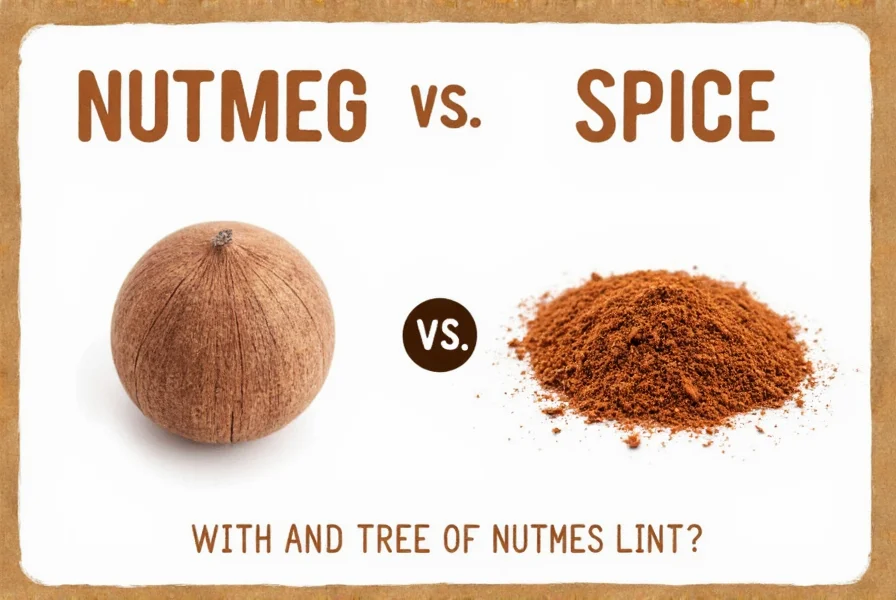When patients encounter the term "liver nutmeg" in medical contexts, confusion often arises between this clinical description and potential effects of actual nutmeg consumption. Understanding this distinction is crucial for accurate health information.
What Exactly Is Nutmeg Liver?
Nutmeg liver, clinically known as congestive hepatopathy or chronic passive congestion of the liver, describes the visual appearance of a liver affected by prolonged blood backup. The name comes from the characteristic speckled pattern that resembles grated nutmeg spice when viewed macroscopically.
This condition develops when the heart fails to pump blood effectively, causing blood to accumulate in the liver's venous system. The central areas of the liver lobules become congested with blood (appearing dark red), while the peripheral zones remain relatively normal (pale), creating the distinctive "nutmeg" pattern.
Common Causes of Nutmeg Liver
The primary cause of nutmeg liver is right-sided heart failure, but other conditions can contribute:
| Cause Category | Specific Conditions |
|---|---|
| Cardiac Conditions | Cor pulmonale, tricuspid valve insufficiency, constrictive pericarditis |
| Venous Obstruction | Budd-Chiari syndrome, inferior vena cava obstruction |
| Chronic Conditions | Pulmonary hypertension, chronic obstructive pulmonary disease |
Nutmeg Liver vs. Nutmeg Spice Consumption
One of the most persistent misconceptions about nutmeg liver involves confusion with actual nutmeg spice. Nutmeg liver has no direct relationship to consuming nutmeg (Myristica fragrans). The term refers solely to the visual appearance of the affected organ.
While excessive nutmeg consumption can cause toxicity due to myristicin content, this represents a completely different medical issue. Nutmeg toxicity typically causes neurological and gastrointestinal symptoms rather than the specific liver pattern seen in congestive hepatopathy.
Symptoms and Diagnosis
Patients with nutmeg liver often present with symptoms related to the underlying cause rather than the liver appearance itself. Common indicators include:
- Peripheral edema (swelling in legs and ankles)
- Abdominal distension from ascites
- Jugular venous distension
- Fatigue and reduced exercise tolerance
- Liver enlargement with possible tenderness
Diagnosis typically involves imaging studies like ultrasound or CT scans, along with assessment of cardiac function. Liver biopsy reveals the characteristic centrilobular congestion that creates the nutmeg appearance.
Treatment and Management
Treating nutmeg liver focuses on addressing the underlying cause rather than the liver appearance itself. Effective management strategies include:
- Optimizing heart failure treatment with appropriate medications
- Managing fluid retention through diuretics and sodium restriction
- Treating underlying pulmonary conditions contributing to right heart strain
- Regular monitoring of liver function tests
- Lifestyle modifications including exercise within tolerance limits
Early intervention for the primary condition can prevent progression to more severe liver damage, including cardiac cirrhosis in advanced, untreated cases.
Prevention Strategies
Preventing nutmeg liver primarily involves managing conditions that lead to chronic venous congestion:
- Regular cardiac check-ups for those with heart conditions
- Effective management of hypertension and pulmonary diseases
- Maintaining healthy weight to reduce cardiac strain
- Avoiding excessive alcohol consumption which can compound liver stress
- Following prescribed treatment plans for existing cardiac conditions
When to Consult a Healthcare Provider
Individuals experiencing symptoms of heart failure or liver dysfunction should seek medical evaluation. Early detection of conditions leading to nutmeg liver allows for more effective intervention before significant organ damage occurs.
FAQ
Is nutmeg liver caused by eating too much nutmeg spice?
No, nutmeg liver is not caused by consuming nutmeg spice. The term describes the visual appearance of a liver affected by chronic venous congestion, typically from heart conditions. It has no relationship to dietary nutmeg intake.
Can nutmeg spice damage your liver?
While excessive nutmeg consumption can cause toxicity with neurological and gastrointestinal symptoms, it does not typically cause the specific "nutmeg liver" pattern. Nutmeg toxicity rarely leads to significant liver damage at typical culinary usage levels.
What's the difference between nutmeg liver and fatty liver?
Nutmeg liver results from blood congestion due to heart problems, showing a speckled pattern. Fatty liver (steatosis) involves fat accumulation in liver cells, usually from metabolic issues like obesity or diabetes. They have different causes, appearances, and treatment approaches.
Is nutmeg liver reversible?
In early stages, addressing the underlying cardiac condition can improve or reverse the liver changes. However, prolonged untreated congestion may lead to fibrosis and eventually cardiac cirrhosis, which is less reversible.
How is nutmeg liver diagnosed?
Diagnosis involves imaging tests like ultrasound or CT scans showing characteristic liver patterns, along with assessment of cardiac function. Liver biopsy can confirm the centrilobular congestion that creates the nutmeg appearance, but is not always necessary.











 浙公网安备
33010002000092号
浙公网安备
33010002000092号 浙B2-20120091-4
浙B2-20120091-4